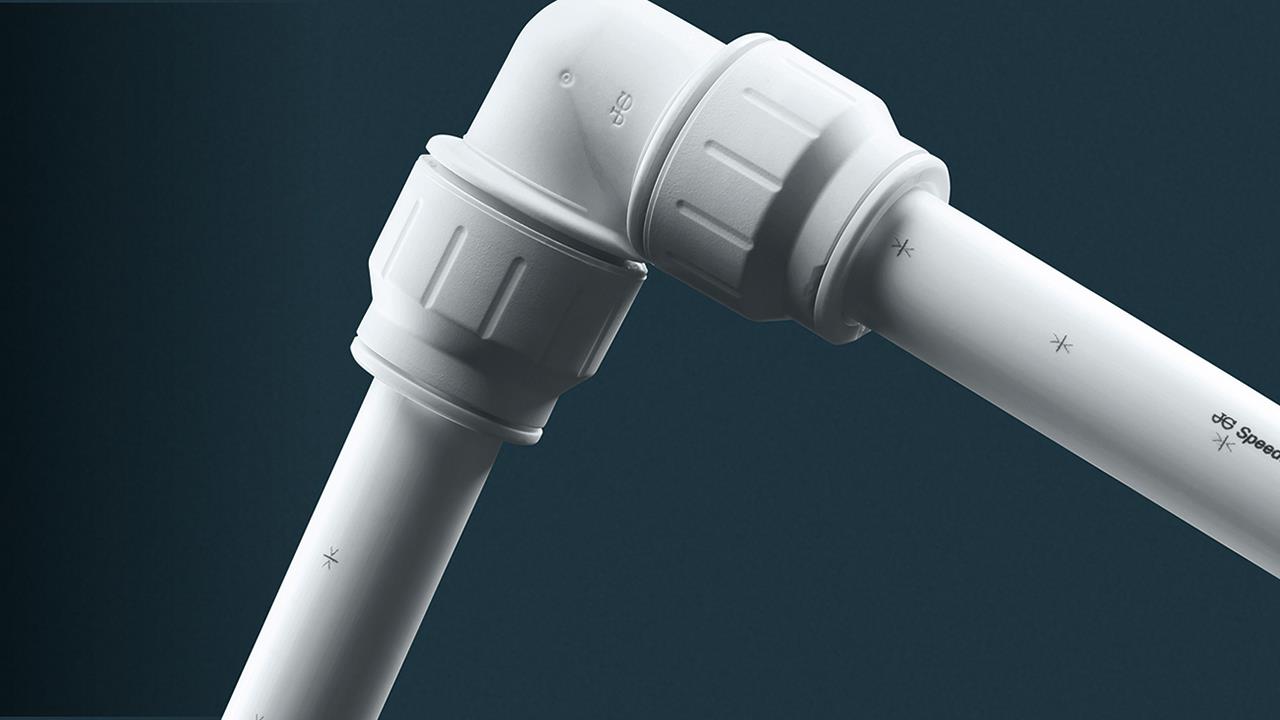


Richard Harvey, Category Director for Plumbing and Heating at Wolseley, runs installers through why push-fit is the perfect technology to meet the challenge of small spaces head-on.
Homes built from 2020 onwards are, on average, over 4m2 smaller than in previous decades, with kitchens not much bigger than they were in the 1930s.
In a world where teslevisions are getting bigger, but the homeowner’s kitchen is getting smaller, plumbing and heating installers are most certainly feeling the pressure when completing installations. The answer to many of our space-related woes could lie in push-fit fittings.
History
Heating and plumbing installers were introduced to push-fit technology back in 1970 after John Guest, founder of JG Speedfit, provided the industry with a simplified and efficient alternative to traditional welding.
Before plastic push-fit technology was introduced, installers were faced with timely and often awkward tasks, having to achieve high-quality installations with no option other than highly skilled soldering procedures.
Functionality
When twisted, pushed, and locked, the push-fit technology, designed with an O-ring seal and metal-toothed grab ring, secures the system’s pipework to form a watertight seal.
Once it is pushed together, installers can only take the pipes apart with a twist of the joint, or by releasing them with a key.
As an installer, you’ll be aware of the strength and value that copper pipe adds to any job. But it’s because of copper’s strength that it can sometimes be a very difficult material to work with, particularly in tight spaces.
The beauty of using push-fit and plastic pipework when access is a challenge is that couplers, elbows, and pipe inserts can be assembled before being installed. This is a really useful feature for installers when they are running pipework through wooden joists, as it removes the need to solder near timber, the need for adequate ventilation for soldering while complying with Building Regulations, and the need to consider corrosion from materials around it.
Reducing prep
When plumbers install kitchen appliances, for example, they often find themselves soldering copper pipes around kitchen units, sometimes putting themselves, their employees, and their customers at risk. For traditional fittings, installers not only have to spend time preparing copper pipes, but must also assemble and solder them to achieve capillary action.
Push-fit, on the other hand, does not require any maintenance. With no drying time, CPVA solvent glue, or soldering required, installers can expect to save up to 40% on installation times compared to traditional methods.
Time is money
One of the many benefits of push-fit technology is the amount of time an installer can expect to save on a job. Take a kitchen tap, for example. When a plumber is connecting the fixture to the unit, the service valve will be an easy job, but connecting the tap becomes the most challenging part. With copper pipes, installers must find ones that are compatible but, with push-fit, they come in all different shapes and sizes.
Push-fit fittings are also compatible with copper and other materials, making them perfect for retrofit work and replacement. Up to three hours of labour time can be saved, reducing the total installation time.
Bent out of shape
Every plumber in Britain is familiar with being squashed as they attempt to work in a poorly lit, tight space, such as in a cupboard or underneath a floor. As a result, soldering can become impossible.
With plastic push-fit, pipework can be connected in a few clicks, reducing the need to be trapped in awkward spaces or being in a position where you need to battle with light in order to ensure a secure connection is achieved.
Reputation boost
Push-fit technology can contribute to significant time savings, meaning installers can build their reputation for delivering work quickly and still meet the customer’s expectation for quality.
With speed of service or resolution high up on every customer’s priority list, and most installers earning work based upon their reputation and word of mouth, push-fit can offer more than just ease of installation.
The versatility and robust nature of push-fit fittings can also reduce the need to repeat visits and repairs, giving the product further efficiency and reliability.
If you'd like to keep up-to-date with the latest developments in the heating and plumbing industry, why not subscribe to our weekly newsletters? Just click the button below and you can ensure all the latest industry news and new product information lands in your inbox every week.